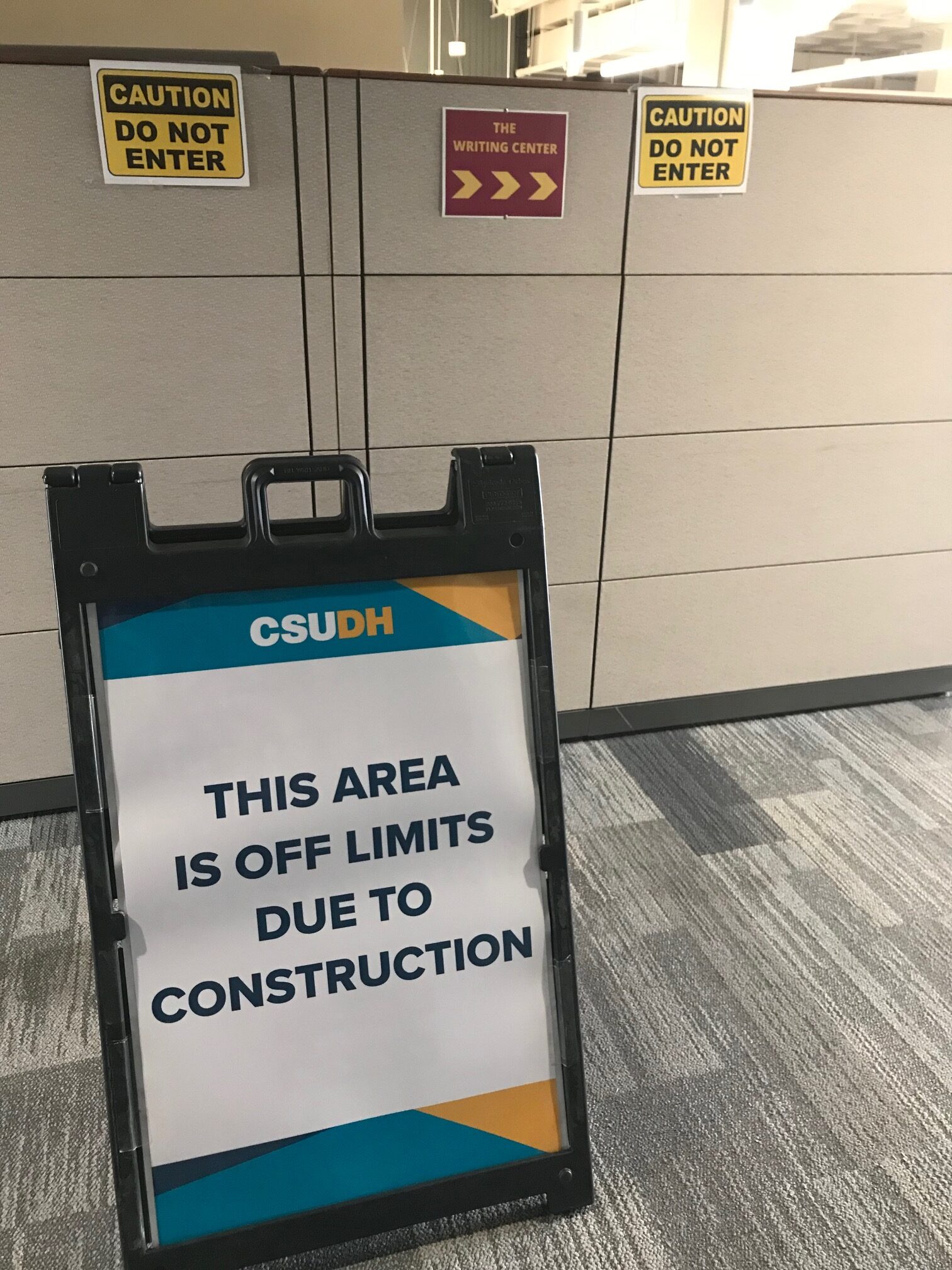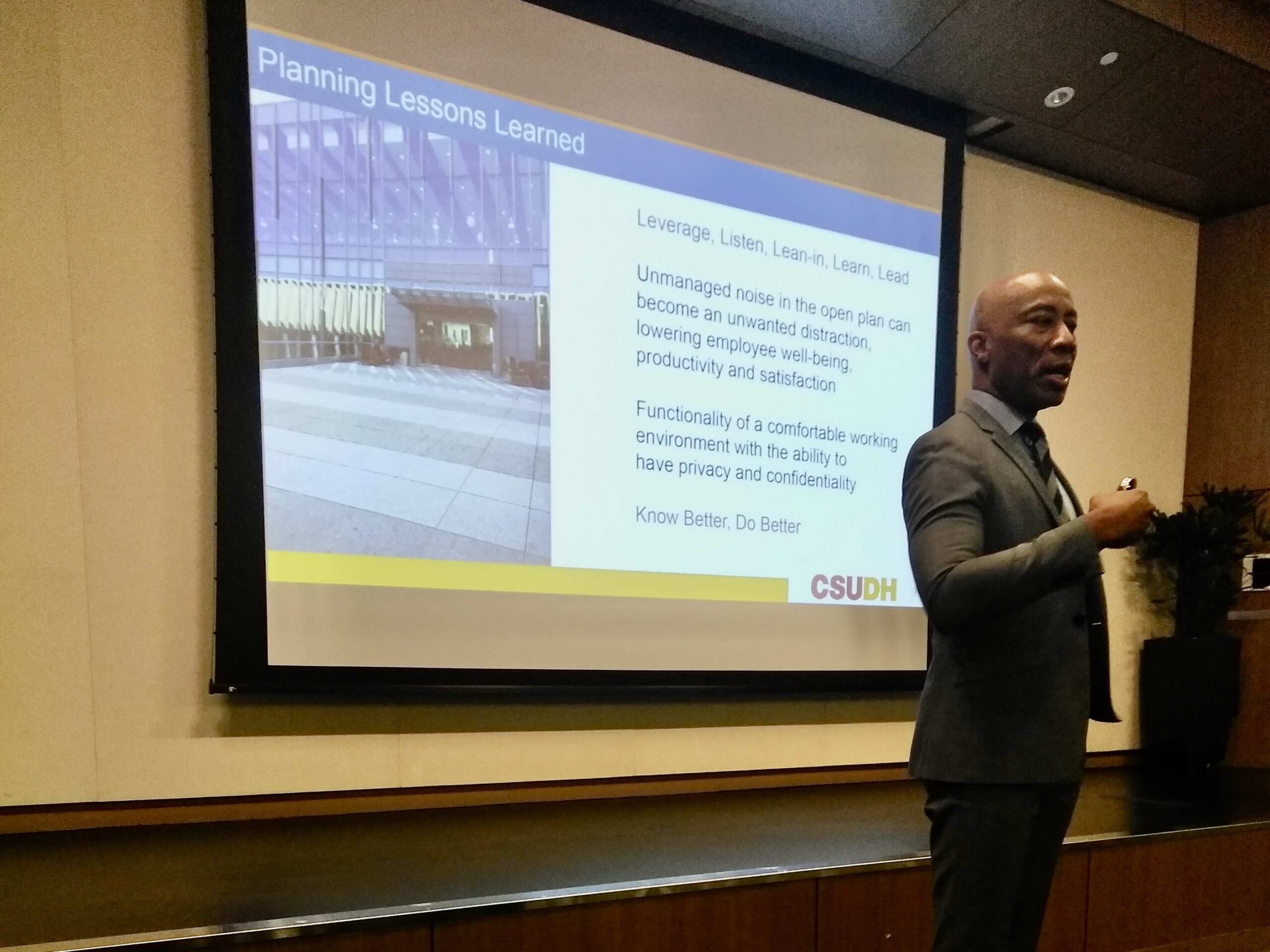Faculty, students, staff, and employees will transition back to campus after a year and a half of online classes.
By Jasmine Contreras, Staff Reporter
Eighty percent of classes next semester are projected to be in-person at California State University, Dominguez Hills next semester, but opinion is divided on just what that will look like.
In a university statement from Oct. 13, President Thomas A. Parham addressed concerns some faculty may have about scheduling so many in-person classes with the coronavirus still an issue.
“I am aware that there are questions about the 80% goal for face-to-face instruction. Many come from vulnerable communities who have been severely impacted by this pandemic so there is resistance to returning to campus,” Parham said.
However, Parham also said in the email statement that even though everyone, including himself, is exposed to the virus daily, he believes CSUDH is ready to take this step.
“With the provisions we have taken on campus, and public health advisories that suggest that we can engage each other safely with proper adherence to health protocols, I am confident that the campus environment is a relatively safe space to traverse,” Parham said.
Tom Taylor, a lecturer in the biology department, isn’t as confident.
Taylor said while the guidelines in place this semester are clear, he feels there hasn’t been clear communication about how instructors should handle issues that may come up with such a higher number of people on campus next semester.
“There will be issues specific to next spring that have not been issues this semester and so that should be addressed,” Taylor said.
Jim Keville, an associate professor, has a different perspective. He said that communication within the College of Arts and Humanities has been effective concerning next spring’s guidelines and safety protocols.
“I personally feel like we have gotten good information from that platform, coming down from the academic affairs to the dean’s office and then into our programs,” Keville said.
Keville said he will not have much of a hard time transitioning to in-person classes next semester because he feels prepared to do so. He has taught a limited face-to-face ceramics class since the fall of 2020 and taught it again this semester with more students.
He also said he recognizes how other faculty who have been teaching online for a while and switching back to campus may be affected but he feels ready.
“Overall I would say that we’ve been informed and that information has helped us create the spring schedule so that we will have that 80% face-to-face class requirement,” Keville said.
Emergency Preparedness Manager Nora A. Garcia explains the campus is regularly updating the Campus COVID-19 Response and Safety Plan as county, state, and federal guidelines shift, so the same safety protocols and guidelines for fall will take place in spring.
But Taylor still has questions. He questions whether there will be people monitoring everyone on campus to make sure they are all wearing their masks. Taylor also said it is important for the campus to have safety ambassadors to ensure everyone complies with the rules.
“I was inside the new SCI (Center for Science and Innovative) Building and I turned a corner and a student was sitting there with no mask on. I asked him if he had a mask. ‘Yes’ he replied. ‘Please keep it on’ I said.”
Taylor pointed out this incident is an example of how everyone has to be vigilant on campus but it can become difficult as the campus population increases.
According to Garcia, two full-time staff will serve as safety ambassadors on campus to help enforce the mask mandate, and the university hopes to hire two more safety ambassadors and student safety ambassadors.
“My mission is to protect public health by creating a safe environment to learn and work,” Garcia said. “Ultimately, by keeping CSUDH’s infection rate low.”
Keville said one challenge CSUDH will face is not having enough physical space to accommodate the 80% of in-person classes, which raises a potential issue about social distance and lack of ventilation in some classrooms.
According to the CDC, institutions of higher education where everyone is fully vaccinated should “Continue to follow cleaning, disinfecting, and ventilation recommendations.”
Although the CDC does not recommend social distance among fully vaccinated, ventilation and sanitation are still measures to avoid COVID transmission.
“Now that we will be returning to face to face we don’t have necessarily the physical space to accommodate the growth that we’ve achieved over the last year and a half of the pandemic,” Kevill said.



